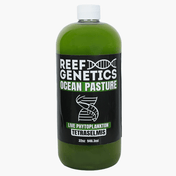Soft corals add a splash of color and life to any marine aquarium, making them a favorite among both novice and experienced aquarists. Unlike their hard coral counterparts, soft corals lack a rigid calcium carbonate skeleton, giving them a unique, flowing appearance. This guide will take you through everything you need to know about soft coral care, from selecting the right species to creating the perfect environment for them to thrive.
What Are Soft Corals?
Characteristics of Soft Corals
Soft corals, also known as Alcyonacea, are a type of coral that lack the hard, stony skeleton typical of hard corals. Instead, they have a flexible, leathery structure that allows them to sway with the currents. Their colors can range from muted browns and greens to vibrant reds, pinks, and purples. These corals often form colonies and are known for their polyps, which extend out to capture nutrients from the water.
Types of Soft Corals
- Leather Corals: Known for their tough, leathery texture, leather corals (Sarcophyton, Lobophytum) can grow quite large and are relatively easy to care for. They come in a variety of shapes and sizes, often resembling mushrooms or toadstools.
- Zoanthids: Small, button-like polyps that come in a variety of colors. Zoanthids (Zoanthus spp.) are popular due to their bright, fluorescent colors and ease of care.
- Mushroom Corals: Resemble underwater mushrooms and are often brightly colored. Mushroom corals (Discosoma, Ricordea) are hardy and can thrive in a variety of lighting conditions.
- Gorgonians: Also known as sea fans, these have a branching, tree-like structure. Gorgonians (Gorgonia spp.) require moderate to high flow and are typically more challenging to keep than other soft corals.
Setting Up Your Soft Coral Tank
Essential Equipment
- Lighting: Soft corals require moderate to high lighting, ideally from LED or T5 fluorescent lights. Ensure your lights provide the correct spectrum for coral growth, typically in the 14,000 to 20,000 Kelvin range.
- Filtration: A good quality filter is essential to maintain water quality. Protein skimmers, canister filters, and live rock are popular choices.
- Water Flow: Soft corals thrive in moderate water flow. Powerheads can help create the right conditions by ensuring adequate circulation and preventing dead spots.
- Heater: Maintain a stable temperature between 72-78°F. An aquarium heater with a reliable thermostat is essential for maintaining consistent temperatures.
Water Parameters
- Salinity: Keep salinity between 1.023 and 1.025 specific gravity. Use a refractometer for accurate measurement.
- pH Level: Maintain a pH level between 8.1 and 8.4. Regularly test and adjust as needed.
- Nitrates and Phosphates: Keep nitrates below 10 ppm and phosphates as close to 0 as possible. High levels of nitrates and phosphates can lead to algae growth and coral stress.
Introducing Soft Corals to Your Tank
Acclimation Process
Proper acclimation is crucial for the health of your new corals. Use a drip acclimation method to slowly introduce them to your tank's water conditions. This involves slowly mixing tank water with the water the corals came in, over the course of 1-2 hours.
Placement and Spacing
- Light Requirements: Place light-loving species near the top and those with lower light needs near the bottom. Adjust positions based on coral response to light levels.
- Water Flow: Ensure corals receive adequate flow without being directly blasted by powerheads. Gentle, indirect flow is often best.
- Avoid Overcrowding: Give each coral enough space to expand and grow. Overcrowding can lead to competition for light and nutrients, as well as physical damage from stinging.
Maintaining Your Soft Coral Tank
Regular Water Changes
Performing regular water changes (10-20% every 2-4 weeks) helps maintain water quality and replenish essential trace elements. Use high-quality salt mix and ensure the new water matches the tank's temperature and salinity.
Feeding Soft Corals
While soft corals can obtain nutrients from photosynthesis, many benefit from additional feeding. Use coral foods like phytoplankton, zooplankton, or specialized liquid coral foods. Feed small amounts 2-3 times per week, observing coral response.
Monitoring Health and Growth
- Check for Pests: Regularly inspect your corals for pests like flatworms or nudibranchs. Use dips or quarantine procedures to treat affected corals.
- Observe Growth: Healthy corals should show signs of growth and expansion. Adjust lighting and flow as needed to promote optimal conditions. Monitor for any signs of distress, such as bleaching or tissue recession.
Common Soft Coral Species for Beginners
Green Star Polyps (Pachyclavularia sp.)
Easy to care for and grow rapidly, making them ideal for beginners. They have a bright green color and form a mat-like structure.
Kenya Tree Coral (Capnella sp.)
Known for its tree-like appearance and hardiness. Kenya Tree Corals are forgiving of less-than-perfect water conditions and are a good choice for new aquarists.
Toadstool Leather Coral (Sarcophyton sp.)
Features a leathery texture and is highly tolerant of varying conditions. Toadstools are long-lived and can grow to impressive sizes.
Xenia Coral (Xenia sp.)
Pulsating polyps create a mesmerizing effect in the aquarium. Xenia corals are fast-growing and can quickly cover rock surfaces.
Troubleshooting Common Issues
Brown Algae Overgrowth
- Cause: Excess nutrients and inadequate lighting.
- Solution: Reduce feeding, increase water changes, and adjust lighting. Use algae-eating invertebrates like snails and crabs.
Coral Bleaching
- Cause: Stress from poor water quality, inadequate lighting, or high temperatures.
- Solution: Check and adjust water parameters, improve water flow, and provide adequate lighting. Reduce stress by ensuring stable conditions.
Pest Infestations
- Cause: Introduction of pests from new additions or live rock.
- Solution: Perform regular inspections, quarantine new additions, and use pest treatments as needed. Manual removal and dips can help control pests.
Soft Corals: A Beginner's Perspective
Why Choose Soft Corals?
Soft corals are often recommended for beginners due to their hardiness and ability to thrive in a variety of conditions. They add movement and vibrant color to any aquarium, creating a dynamic and engaging underwater landscape. Their ease of care makes them an excellent introduction to coral keeping.
Tips for Success
- Research: Learn about the specific needs of each coral species. Knowledge is key to successful coral care.
- Patience: Allow your corals time to acclimate and grow. Rushing can lead to mistakes and stress.
- Consistency: Maintain stable water conditions through regular maintenance. Consistency in care routines promotes a healthy tank environment.
FAQs
How often should I feed my soft corals?
Feeding can be done 2-3 times a week with specialized coral foods or phytoplankton. Observe coral response to adjust feeding frequency.
Can soft corals live with fish?
Yes, many soft corals can coexist with a variety of reef-safe fish species. Avoid fish that may nip at corals, such as certain angelfish and butterflyfish.
What is the best light for soft corals?
LED and T5 fluorescent lights are ideal, providing the right spectrum and intensity. Ensure lights are appropriate for the specific needs of your coral species.
Do soft corals require special supplements?
While not always necessary, supplements like calcium, magnesium, and trace elements can benefit coral health. Regular testing will help determine if supplementation is needed.
How can I tell if my soft corals are healthy?
Healthy soft corals will exhibit vibrant colors, open polyps, and signs of growth. Monitor for any changes in appearance that could indicate stress or poor health.
Can I keep different types of soft corals together?
Yes, but be mindful of their placement to ensure they all receive appropriate light and flow. Some corals may produce chemicals that affect others, so provide adequate space and observe interactions.
Conclusion
Caring for soft corals can be a rewarding and enjoyable experience, especially for beginners. With the right knowledge and preparation, you can create a thriving, colorful reef aquarium that brings the beauty of the ocean into your home. Remember to stay patient, consistent, and attentive to your corals' needs, and you'll be well on your way to becoming a successful coral keeper.


















